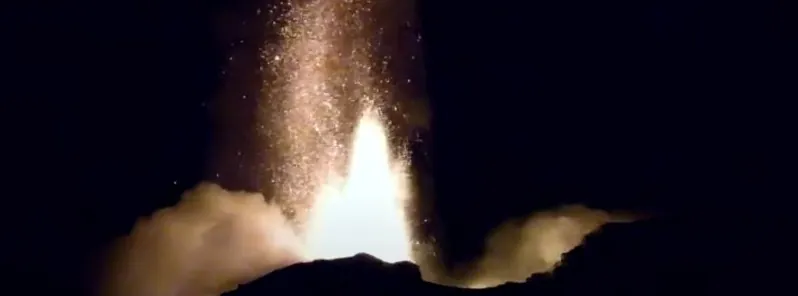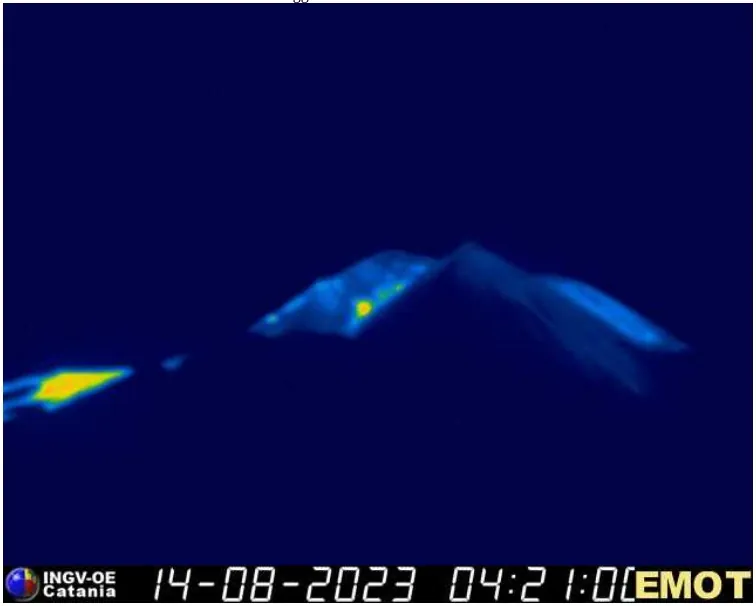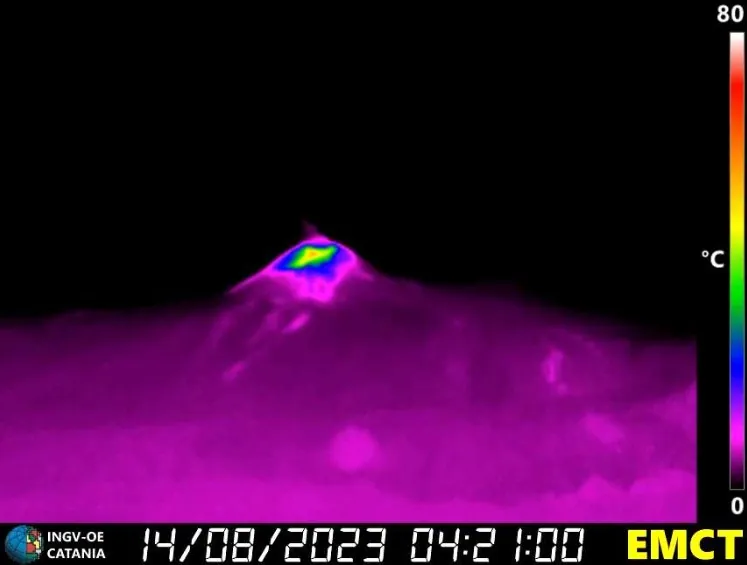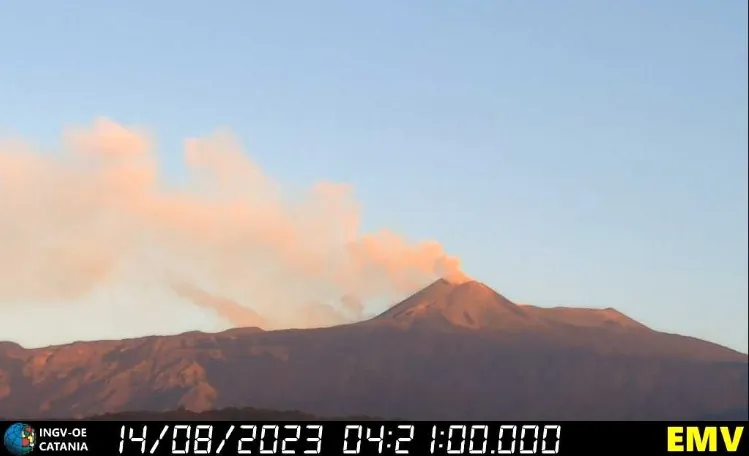Strong explosive activity, lava fountains at Mount Etna, Italy

A new Strombolian eruption started at Etna’s Southeast Crater at 18:40 UTC on August 13, 2023. The activity increased to lava fountaining over the next couple of hours.
Seismic activity at the volcano suddenly increased at around 18:00 UTC on August 13. Within approximately 20 minutes, it reached heightened levels, with the epicenter of this activity situated just below the Southeast Crater, approximately 2.8 km (1.7 miles) above sea level.
Due to increased activity, Etna Volcano Observatory raised the Aviation Color Code from Yellow at 19:26 UTC to Orange just three minutes later at 19:29 UTC, and finally to Red at 20:41 UTC. Notably, the Aviation Color Code for the volcano had previously been set to Red on May 21, 2023, and before that, on June 3, 2022.
Ashfall was observed in the town of “Rifugio Sapienza – Piano Vetore” — located south of the volcano at an elevation of 1.7 – 1.8 km (1 – 1.1 miles) a.s.l., INGV-OE reported at 20:30 UTC. At the time of the report, the average amplitude of volcanic tremors and infrasonic activity both showed an increasing trend.
By 21:30 UTC, the initial Strombolian activity had transitioned to notable lava fountaining. Concurrently, an eruptive cloud began to disperse in a southerly direction. Observers also noted a lava flow making its way down the southern flank of the Southeast Crater.
The activity subsided during the early morning hours of August 14.



Mount Etna, located above Catania in Sicily, has a rich volcanic history dating back to 1500 BCE, making it one of the world’s most well-documented volcanoes. As Italy’s highest and most voluminous volcano, it boasts historical basaltic lava flows covering its massive surface.
Built during the late Pleistocene and Holocene atop an older shield volcano, Etna features several small calderas. Its most notable feature is the Valle del Bove, an eastward-open caldera spanning 5 x 10 km (3.1 x 6.2 miles).
Etna’s eruptions vary: persistent explosive eruptions occasionally emit lava from summit craters, while less frequent flank vents produce higher effusion rates and often associate with Strombolian eruptions. Lava flows, originating from these vents and cinder cones, spread across the volcano’s base and have even reached the sea on its southeast side.
References:
1 Comuinicato di attivita’ vulcanica – Etna – August 13, 2023
2 Etna – Geological summary – GVP
Featured image credit: Vedetta Live Webcam Streaming (stillshot)

Commenting rules and guidelines
We value the thoughts and opinions of our readers and welcome healthy discussions on our website. In order to maintain a respectful and positive community, we ask that all commenters follow these rules.